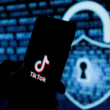In the past several days alone, the Centers for Disease Control and Prevention has flip-flopped on several important issues regarding COVID-19.
These constant reversals in messaging have called into question the government agency’s efficacy.
Although messaging from the CDC has been mixed and inconsistent throughout the pandemic, this has especially been the case in recent weeks.
All from the CDC within the last week 🤨 pic.twitter.com/ZLgsr21JKp
— Greg Price (@greg_price11) April 2, 2021
The first example of this mixed messaging was in regard to whether individuals who have received a COVID-19 vaccine can still carry the virus.
On March 30, during an appearance on MSNBC, CDC Director Rochelle Walensky said vaccinated individuals “do not carry the virus.”
CDC Director Dr. Rochelle Walensky: “Our data from the CDC today suggest that vaccinated people do not carry the virus.” pic.twitter.com/9W1SHecSEm
— The Recount (@therecount) March 30, 2021
Only a few days later, a CDC spokesman backtracked, telling The New York Times that “the evidence isn’t clear” and that Walensky had been “speaking broadly.”
“It’s possible that some people who are fully vaccinated could get COVID-19,” the spokesman said. “The evidence isn’t clear whether they can spread the virus to others. We are continuing to evaluate the evidence.”
Additionally, after the CDC updated its guidance on travel, announcing that “fully vaccinated” citizens “can travel safely within the United States,” Walensky came forward with more mixed messaging, saying she advocates “against general travel overall,” as reported by The Associated Press.
Also, despite the fact that 2021 has seen vaccination numbers continue to rise while COVID-19 deaths continue to fall, Walensky said she harbors a “recurring feeling” of “impending doom.”
“When I first started at CDC about two months ago, I made a promise to you. I would tell you the truth even if it was not the news you wanted,” she said during a briefing at the White House on March 29.
“Now is one of those times when I have to share the truth and I have to hope and trust you will listen. I’m gonna pause here, I’m gonna lose the script and I’m gonna reflect on the recurring feeling I have of impending doom,” she said.
“We have so much to look forward to, so much promise and potential of where we are and so much reason for hope, but right now I’m scared.”
When asked about what she saw in the data that precipitated this feeling of “impending doom,” Walensky said she believed a current “steady rise in cases” could “surge, and surge big.”
That same day, in another recent example of the public health agency’s constant backtracking, the CDC announced it would be extending the federal eviction moratorium only two days before it was set to expire. The moratorium is now set to end on June 30.
[firefly_poll]When originally implemented, the idea behind the moratorium was that evicted tenants might be forced to live with relatives, which would exacerbate the spread of the coronavirus.
Landlords and landlord advocacy groups predictably pushed back against the order, since, in many cases, it effectively incentivizes renters to abdicate their responsibilities to pay rent.
“Though politically popular and well-intentioned, eviction moratoria push renters and their housing providers closer to the brink of financial ruin,” Bob Pinnegar, president and CEO of the National Apartment Association, told NPR on March 29.
“They cite [eviction] as a public health hazard. I would probably be hard-pressed to say how it’s that much bigger of a hazard than going out to Walmart,” Patrick McCloud, CEO of the Virginia Apartment Management Association, told The Western Journal.
This article appeared originally on The Western Journal.
- Michigan Resident’s Brutal Reaction to News of Biden’s Visit: Wish He Would Stay Out and Leave Us Alone - October 5, 2021
- Senior Dog Rescued by Firefighters After Falling Into Abandoned Well and Treading Water for Four Hours - October 1, 2021
- Tennessee Dem Lawmaker Convicted on 4 Federal Fraud Charges, Still Isn’t Resigning from Office - October 1, 2021










